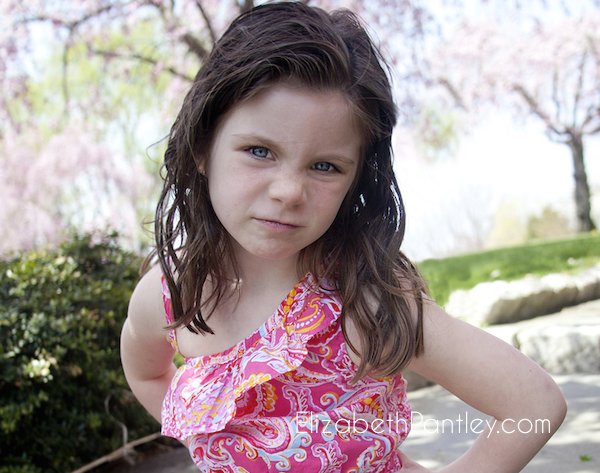
The first time your preschooler talks back to you it’s usually just an honest emotion being expressed: “No. I don’t want to!” The problem is not your child’s lack of desire to do what you want him to, since he’s entitled to his feelings. The problem stems from the way in which his opinion is voiced, and the pattern that this can set. If you don’t point out and correct the way your child is communicating the pattern can continue and become worse over time, since your child will assume that this is an acceptable way to express his feelings.
What You Can do About It
Whether your child has already started back-talking, or your waiting on the edge of your seat for the first time it happens, the following ideas are helpful ways to handle a preschool back-talker.
Don’t empower it.
When your child talks back to you don’t allow the situation to escalate into an argument. Don’t become sidetracked by the subject matter that is being debated. The issue is irrelevant; it is the sassing that needs to be addressed.
Make it a teaching moment.
When your child talks back to you, immediately call her attention to what’s happening. Use it as a perfect opportunity to teach. Get down to your child’s eye level and explain, “Talking to me that way is called ‘backtalk’ and it’s not polite. It’s not the right way to tell me what you think.”
Teach your child what to say instead.
It’s one thing to stop an undesirable behavior. But more importantly, you need to teach your child what to say instead. Teach your child how to politely and respectfully voice his opinion. It helps to provide the exact words that you find acceptable, so continue your lesson with a very precise explanation. “What I want to hear you say is, ‘Mommy, I don’t like those pants. Can I please wear my blue ones instead?’ When you say it that way it’s using your good manners.’”
Keep an eye out for bad influences.
Pay attention to your child’s older siblings and friends, to determine if backtalk is being modeled by another child. Pay attention to the movies or television programs that are tuned in when your child is in the room. Children imitate other people – that’s one way they learn; what goes in children’s ears often comes out their mouths.
Be clear about your expectations.
Backtalk, sassing, being mouthy, arguing, impertinence, or cheekiness – whatever you label it -- this is a common issue that will come up from time to time during childhood. It’s not something you’ll solve once and be done with! However, it can be curbed with guidance and consistency.
Be consistent.
Once you’ve identified ‘backtalk” and your preschooler understands what you’ve discussed, you’ll need to be consistent in your response. If you selectively ignore it, depending on how it happens, or when it happens, or how busy you are at that moment, then you can count on having to deal with more and more sass over time. Backtalk seems to be a childhood rite of passage because it’s an outburst of emotions – and children can be challenged when controlling theirs. However, how the adults in the house respond to backtalk will determine whether it’s a rare occurrence or an everyday battle. Stay calm, be consistent, be a good teacher, and this stage will pass.
Need more tips? The No-Cry Discipline Solution is full of gentle ways to encourage cooperation without whining, yelling or tears!



























